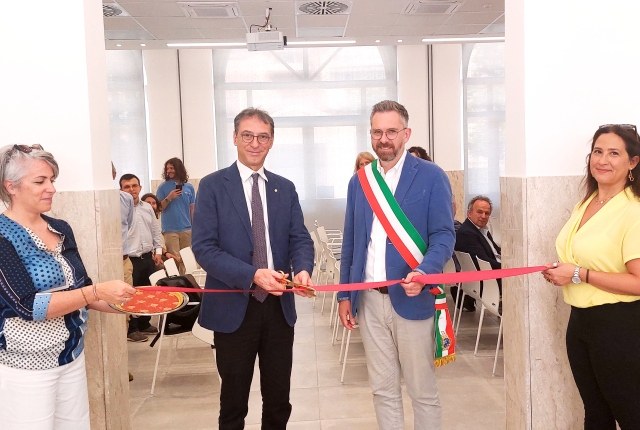The historic building of the Former Veneta Station is reopening its doors, no longer to travelers but to researchers and university staff advancing the PNRR projects of the University of Bologna. With this morning’s ribbon-cutting ceremony, attended by Rector Giovanni Molari and Bologna Mayor Matteo Lepore, the new PNRR spaces in the building on Via Zanolini have been inaugurated.
The project involved an area of approximately 800 square meters with an investment of 1.8 million euros. On the ground floor of the building, where the central hall of the station once stood, a 50-seat classroom has been created, which can also be used as an exhibition space. The administrative offices assisting researchers with the university's PNRR initiatives are located in the southern wing of the building.
On the first floor, a large open-space area has been created to accommodate young researchers from the Department of Computer Science and Engineering working on PNRR-funded research projects.
Owned by the Municipality of Bologna and leased to the University, the Former Veneta Station building is protected by the Ministry of Cultural Heritage. It was part of the “Bologna San Vitale Station and its outbuildings” on the Bologna-Budrio-Portomaggiore railway line, built in the 1880s. It was designed by Ulisse Minarelli, who also designed the Direttissima and Bologna-Verona lines and was built between 1885 and 1887.
The restoration and functional adaptation work involved several portions of the building: the central hall (turned into a classroom), the adjacent southern space where the staircase to the upper floor is located, and the remaining ground floor spaces on the southern side of the building, as well as the external facades and roof. Additionally, the northern part of the ground floor, previously converted into a student refreshment point managed by ERGO, has been refurbished.
All electrical, water, sanitary, and mechanical systems have been redone, creating a highly energy-efficient and environmentally sustainable system. The project demonstrates how historic buildings can be preserved, maintaining their urban and historical integrity without sacrificing functionality and internal comfort.
From the new Former Veneta Station, many young researchers will embark on their journey into the world of research.



